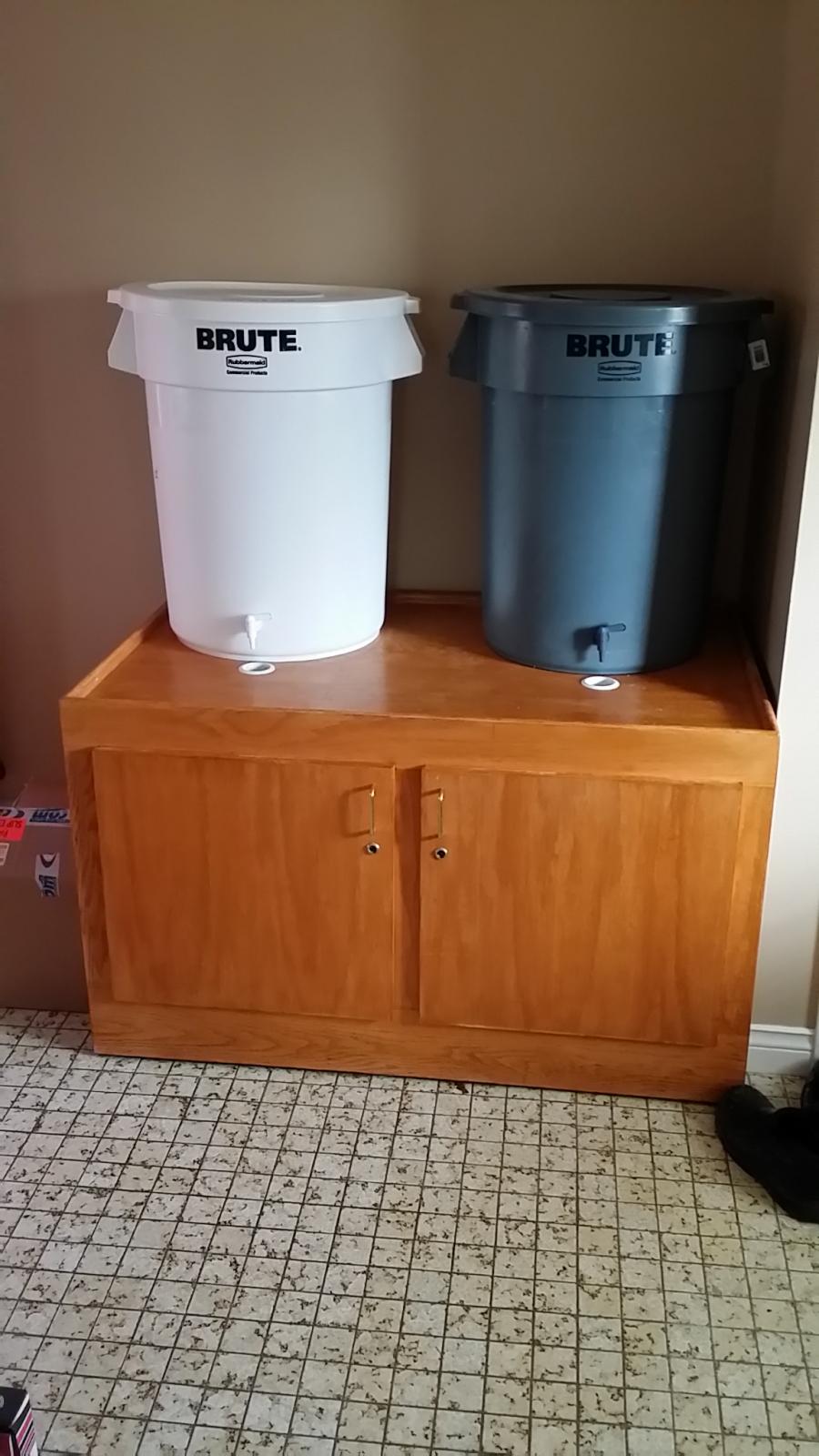hopbrad,
The valves are no-brand thread in weld-less plastic spigots I got from the LHBS. I paid 5.00 CAD for them. Only problem I have with them is that they are 3/8" faucet. When you have 25 gallons in the thing, it takes a long time for a 3/8" faucet to drain it all. As for leaking, no problems at all. I used a hole saw to cut the hole for the spigot and then used a combination of a razor knife and a piece of 1000 grit wet use sandpaper and sanitizer to finish the cut edge of the hole. The big thing I found was to take extra care to only polish the absolute edge of the hole so as to prevent scratching. After that just made sure to have a flat silicon gasket on either side of the fermenter and seal it hand tight. to test it I have filled the cans to the brim with water and let them sit for a day. Checking for leaks every hour or so. No problems.
The problem with these cans, as with any plastic fermenter, is that absolutely any scratch and you have a place for bacteria to hide that can't be sanitized anymore. What is the spigot made of? If its metal the chance its the culprit is zero, as metal is not a place that bacteria can infect well, if its plastic, check it with a light and looking glass carefully for any damage.
Eventually, when I get more money, I will be switching to some form of stainless steel fermenter. I hate the idea of spending 60 bucks on a garbage can that I would have to toss if it got scratched and infected.



